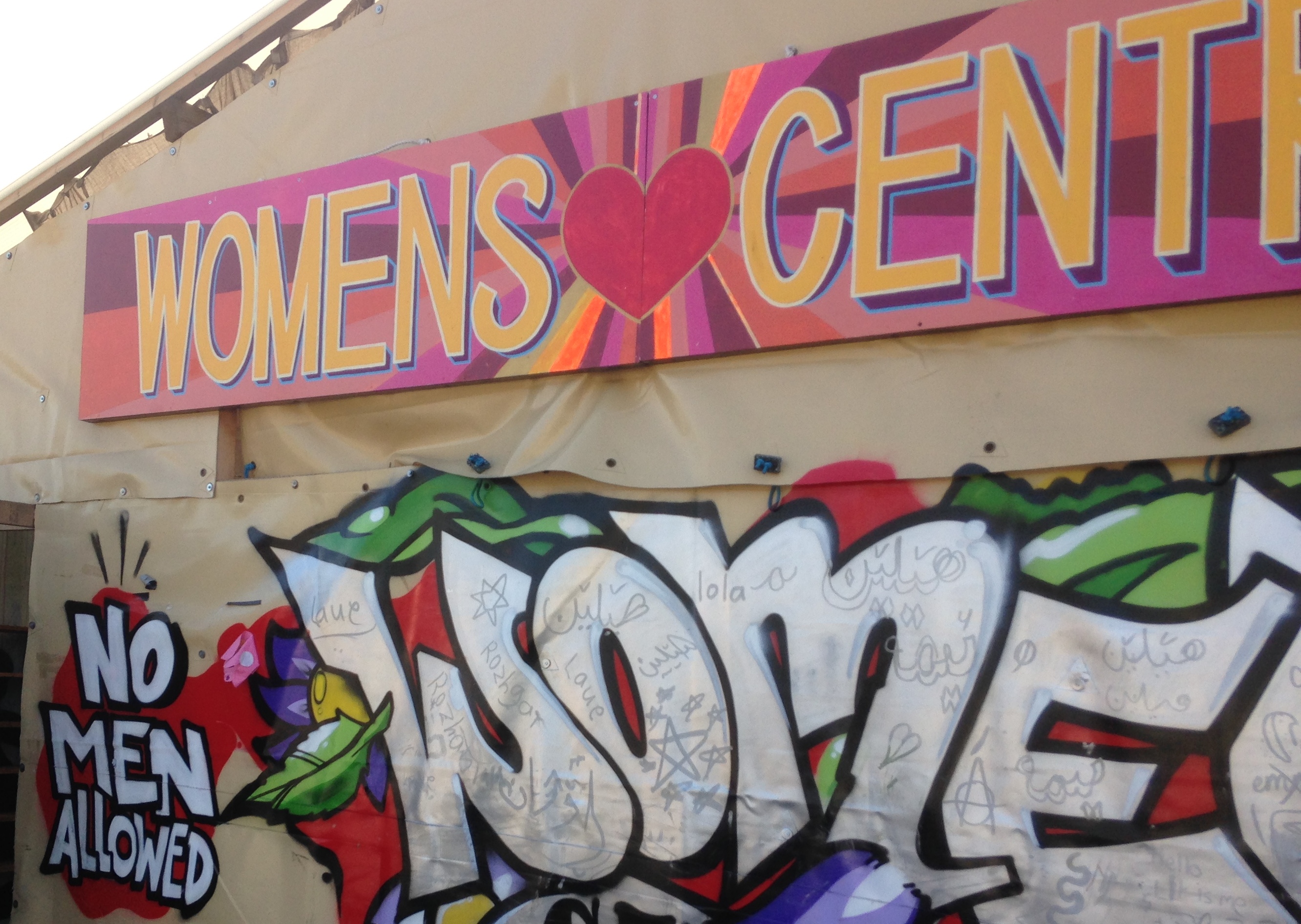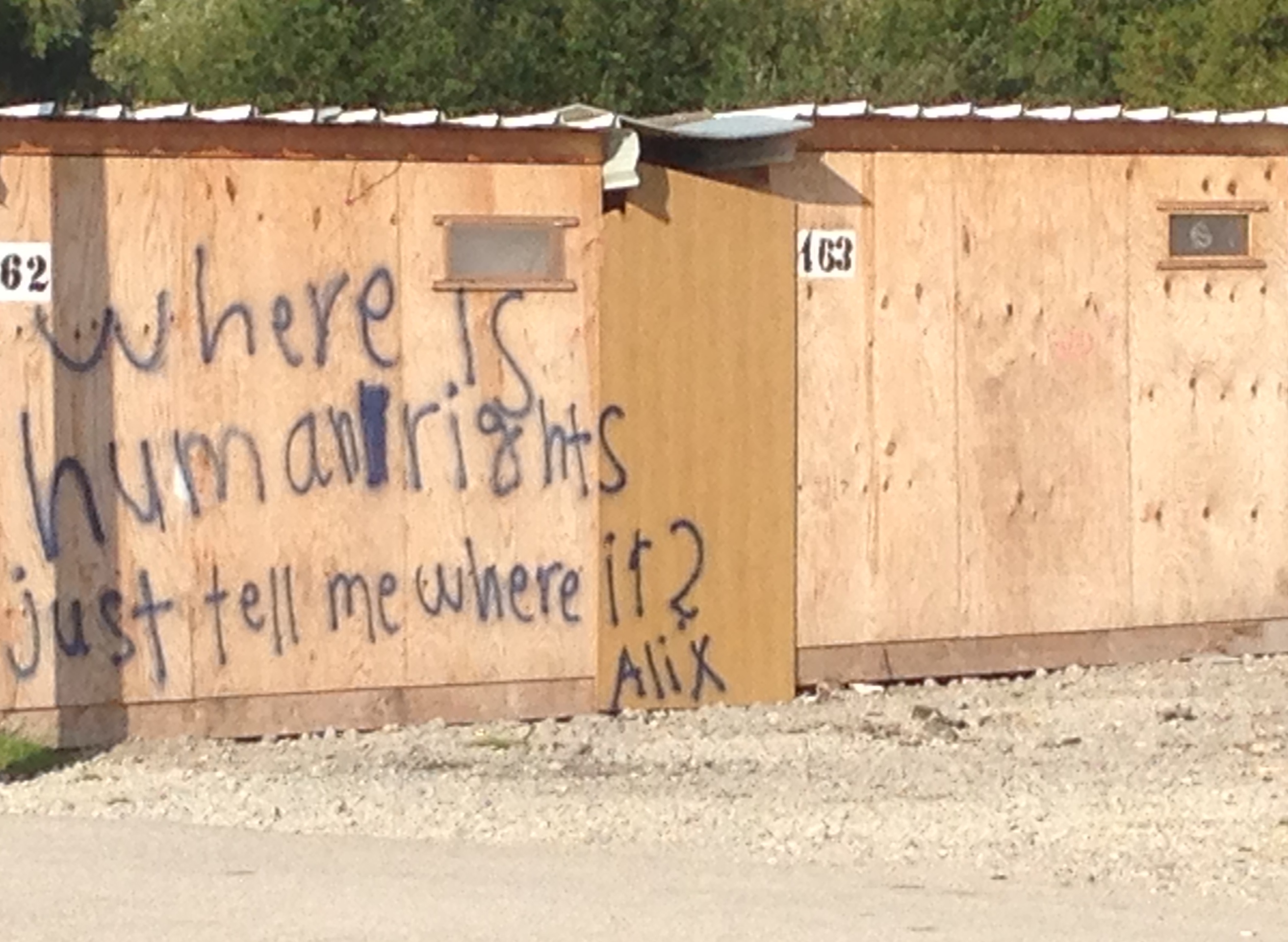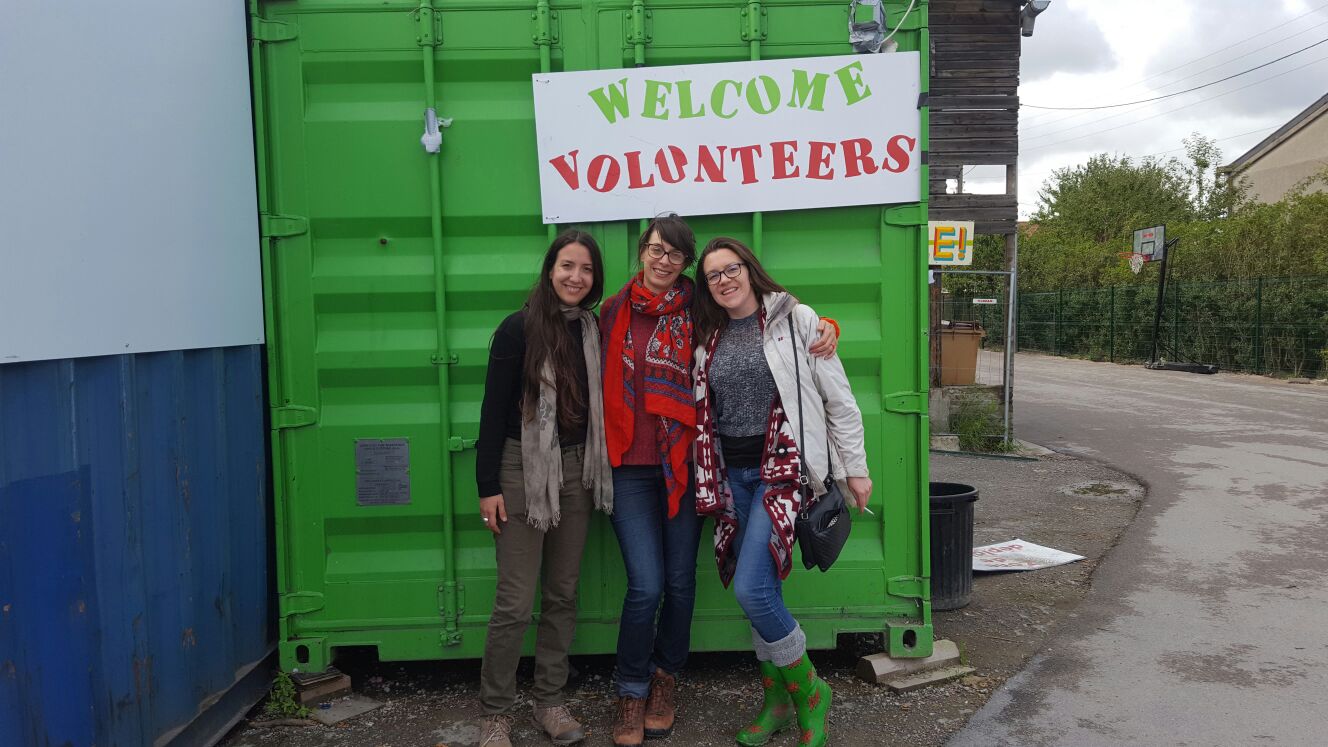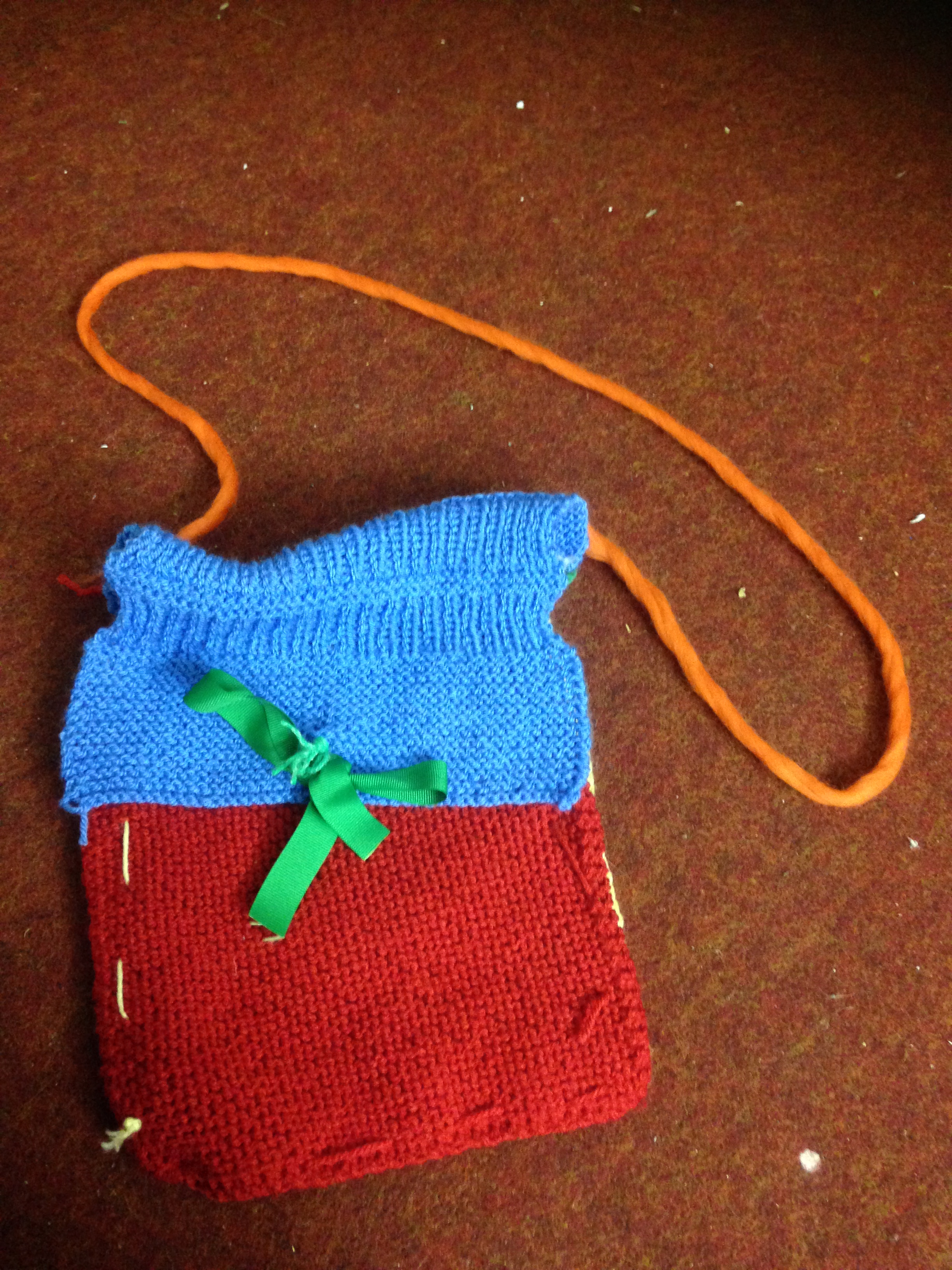Happiness and workshops- a volunteer’s experience at the Refugee Women’s Centre, Dunkirk

I’ve just returned from a few days volunteering at the refugee camp in Dunkirk. It was incredible, it taught me so much about humanity, myself and…well, workshop leading (more on that later). It was also straightforward, dare I say it even easy, at least in comparison to what I had built it up to be in my head. It was an emotional experience, at times it was hard, but really anyone could do it, and I want to convince you to give it a go. I’ll give you an honest description of what I experienced working in the Women’s Centre, and then you can decide for yourself...
But before I tell you more, I’ll give a quick lo-down for those less ‘in-the-know’. The following is based on the knowledge I have gathered over conversations with fellow volunteers, my own research, and the media; but do please fact-check and do your own research. Most people have by now heard of the camp at Calais, otherwise referred to as ‘The Jungle’. Most estimates are that it currently has approximately 10,000 inhabitants; the majority of which are in tents. Some have already been evicted. There is talk of another imminent eviction, this time of everyone, at the end of October. There are no alternatives in place. There is talk of the French Government housing some of the families in hotel rooms. This is obviously temporary, and clearly not a solution considering the vast numbers of refugees that will be further displaced.
There is another camp that not so many are aware of, and that is just outside Dunkirk. In fact, there are two (and this doesn’t count the many make-shift mini-camps we heard about that have recently sprung up and are constantly on the move to avoid detection). The first camp was one of similar conditions to those found in Calais; it became a quagmire, people’s tents were water-logged and disease was rife. At some point earlier this year the French government and Medicine Sans Frontiers stepped in, providing a camp that sought to meet basic UN human rights standards. This pretty much amounts to some wooden shacks, a little over the size of your garden shed, a make-shift medical centre and charity run kitchen (as well as various other volunteer run services like the women’s centre, children’s centre, library and information centre; all in temporary shelters). Nevertheless, from what the people who have seen both camps have said, this creates far superior living conditions than the other camps. It has limited capacity and favours young families and pregnant women. In fact, officially, it is closed to single men. No one knows how long this camp will be in place. There was a recent raid by the French riot police which involved the use of tear gas, and some of the shelters have already been removed. No one knows why. There are now sorry looking herbs and vegetables growing in the plots where the earth has been exposed; clearly planted too late and unlikely to bear anything edible before the winter sets in. There is a lot of space to build more shelters. Many more. There are a good number of toilets and showers in the camp and they are cleaned by a private company, presumably contracted by the government, who also pay their staff to sit outside the entrances all day. No one really knows why... There is talk of the new Dunkirk camp as a slick pre-election move by the French Government, and therefore no need for it after the election has been fought. I’ll let you decide on the accuracy of such a claim yourself. In any case, there is nothing in the camp that has been built to last, and it is unlikely to maintain its humane conditions in the winter. On one of the days we were there a storm was brewing, the power cut briefly, and the reality of winter life in a shelter with walls of cloth and plywood really set in.

So, here’s a little info regarding the actual experience as a volunteer. I didn’t know what to expect. I couldn’t help but expect the worst; no matter how critical you are of media information, it is almost impossible not be influenced by stories of violence and uncontrolled crime. Although I’m sure there are dangerous situations, I did not see any of these in my time in the camp. I saw love, kindness, generosity, laughter, some sadness (of course) and people just trying to get on with lives as ‘normal’. We did hear of one Daesh member who had recently been in the camp, this was found out, there was fear among the inhabitants and by the time we arrived he was gone. I think he was removed by the police, although I can’t be certain. There were also alleged gang members, doing various things, but this is all hearsay so I won’t go into detail here. Much like any community, there will always be opportunists.
My friends and I spent our time volunteering in the Women’s Centre; a safe space for women and children to hang out in during the day. There is a free shop for nappies, toilet roll, sanitary products etcetera, which women come and collect when they need them. These are effectively rationed to ensure that everyone gets their equal share, i.e., one toilet roll per family, per day. There is also an order book where individuals can ask for shoes in a certain size for example, then that item will be put aside if and when it is found among the donations, and given to the person with that order.
There is a large stock of adult nappies. These are used regularly by people facing long journeys in lorries before arriving at their destination.
There is a free clothes shop, where the donated women’s and children’s clothes are sorted into piles relating to age and gender. Again, this is monitored to ensure most get an even share. There is an ‘office’ where; children’s toys, women’s make-up, hairdryers, straighteners, sugar, salt, tea, and snacks to be handed out through the day, plus all paper work, is stored. Everything in the office is to be shared, so again has to be carefully monitored. One lady popped the straighteners in her bag and we only found them after asking around for a time. Who can blame her, but the office is generally manned (or woman-ed!), to make sure that no one gets carried away and all get their fair share. There are also four cooking stoves and a constant supply of chopped wood (as long as there are volunteers there to chop it). Around 4pm in the afternoon the women tend to gather round the stoves and make delicious smelling soups, chicken and potatoes, and lentil daal. The women’s centre fills with the smell of burning wood and cooked food and everything starts to get an air of calm. This was one of my favourite parts of the day. We had to be careful about telling the women that their food smelt good because they would instantly offer out a generous portion, leaving them with less. This happened to one of my co-volunteers. It was a lovely gesture and she enjoyed every mouthful, and I’m sure that the women offering the food got some semblance of normality in being able to share dinner with friends. Nevertheless, we all knew that when we got back to the volunteer accommodation we’d have a relatively stocked fridge and be five minute’s drive from the supermarket, so we learnt not to compliment the smells!
Just to reiterate, I’m sure that for most of you reading this post I don’t need to, but if I do (!)...These are women just like you and I; your mothers, sisters, cousins. One of the women told me that her husband is a doctor. Most seemed to be middle-class, professional women. They clearly have lives in their home country, far-removed from what they are currently experiencing. It was uncomfortable, even embarrassing, being in a position where I was monitoring what they could take from a shipping container of second-hand goods. I can’t imagine how awful it must have made them feel. How strong of them to endure the situation with kindness and smiles.

Now to the workshops. I spent most of my time with the children, having originally aimed to run workshops with the women of the centre. We found upon arrival that the atmosphere was very much one of calm, of conversation, a place for the women to chill out, do hair and make-up and breast-feed (for those still able to produce milk, many can’t). So, time was much better spent distracting the children. There was a number of people arriving wanting to do types of therapy, or workshops with the women during our time there, all with varying levels of success. There is the issue of translation; many of the women don’t speak English. Also the fact that when you arrive at the centre the atmosphere is one in which a workshop (of our kind anyway) isn’t appropriate. It feels exploitative. Is it for us, the workshop leaders, or for the women? I think that they would have enjoyed some of the activities we had planned, but I also felt that our time there was better spent helping out in other ways. Besides, playing with the kids was fun. Plus we got a make-over; nails, hair, make-up. The make-up was questionable- more clown chic than the cover of Cosmo- but the girls, like many girls across the globe, loved giving us a good pamper session. Heads, shoulders, knees and toes was a hit with the youngest children of the group, especially when body parts were replaced with raspberries, and a game of Zip, Zap, Boing (every drama workshop leader’s go-to ice-breaker), was a particular hit with the older boys.
One of the most important lessons I learnt while there, was the need for happiness and relative normality. Also behaviour management, sometimes. There were some very naughty kids, some due to having been through unimaginable experiences, and some were just…well…naughty kids, and that’s the way to see it. I felt, at times, in this little bubble that the women’s centre became, that I was doing an after-school club in the UK. I used to do children’s parties and at times I forgot the context of our situation and felt as if I was back home being a kids entertainer again. It’s a situation where behaviour management is needed in equal measure to love and kindness! I fell in love with many of the children there, you’re not supposed to have favourites, but you inevitably do. But...the point I’m trying to make is, it was no time for sentimentality, for piousness, it was a time to be an adult aiming to create a space that would feel as ‘normal’ and un-disruptive as it possibly could. Regardless of the situation. It was a time to be human. And happy.
I had a conversation with one of the volunteers about what we have to offer as individuals. Sometimes it can be easy to think that you have nothing to offer; no skills, not enough time. But sometimes working on your own happiness can be the most generous thing that you can do. In this situation where many of the women and children didn’t speak English, I felt that a happy smile went a long way. My granddad, on one of the final occasions I saw him before he passed away, danced out of the communal room of his care home ,leant on his zimmer frame jiggling any spare limbs not needed for balance, and sang Ken Dodd’s “Happiness, happiness, the greatest gift that I possess...”. How right you are granddad. He had been battling cancer for over 10 years. I’m sure it’s what kept him going for so long. His motto was to never give up, he even had a poster on his kitchen cabinet with words to that effect. Happiness ran through the very core of his being and it fed into his determination to live, take every opportunity given to him, and it made the lives of anyone and everyone around him all the better for it.

So, if you’re convinced you have something to offer as a volunteer, however small, here are some answers to some questions you may have:
Where will I stay? There is free accommodation for volunteers in an old leisure centre only 15 minutes walk from the camp. When you contact the Kesha Niya http://keshaniya.org/volunteer/ they can confirm if there is space. There are 2 beds to each room and a sink. Bring a sleeping bag and a mat then you can always camp out on the floor. 3 of us shared a room and I took a spare mattress, put it on the floor, and slept well (ish- it’s all new and there’s lots floating around your head while you’re there). There are communal showers and toilets. The showers are great; warm and more powerful than my one at home!
Who are the other volunteers and what are they like? A lot of the volunteers are young; I’m guessing that we were some of the eldest at 28-32. Some are on gap years, one had been walking form Nottingham to Norway, injured his ankle on a trampoline, found himself on a bus with a Dunkirk volunteer, and was convinced to come and chop wood for a time! Another lady was...more mature, had a family at home and was giving up a free weekend to drop off donations and help out where she could. Everyone has a story. Everyone has the same beliefs as you at their core, otherwise they wouldn’t be there. It’s communal living with an interesting bunch of people.
What should I pack? Sleeping bag, sleeping mat. Comfortable clothes. I read up on what I should bring beforehand, but I think that the advice I read was outdated and referred to the old camp and the things needed if in those conditions. Obviously it depends on the type of work you’ll be doing, I was mainly in the women’s centre and not outside chopping wood for example, so I would have been fine in trainers and my standard clothes, but it’s a good idea for anyone volunteering to bring some waterproof shoes and a coat. The better prepared you are, the more you can be flexible in the way in which you help on camp. If you know you’ll be in the children’s or women’s centre, just come as you are, but be prepared to get a bit of paint and/or nail varnish, felt-tip pen all over you! You'll probably get a make-over, and possibly a new handbag from the experience (see picture), so it's well worth it!

Can I get there without a car? Yes. We did. All the way from Cardiff. It took a long time, and we had to rely on lifts from fellow volunteers for the Dunkirk-Calais stretch, but we did it. We were lucky because one of us arrived before the other two and we therefore had contact with people at the volunteer accommodation who had cars. We were then able to bribe with beer! We used general liftshare sites, but found that a lot of these fell through; people are under no obligation to take you. Our ferry was also delayed by an hour, which made this difficult. This is however a lift share Facebook group specifically for people volunteering at the camps called Liftshare - Calais and Dunkirk Refugee camps. We didn't know about this beforehand...The only way to get to Dunkirk via ferry as a foot passenger is to get the ferry to Calais first. The ferry direct to Dunkirk is for vehicles only. I recommended bringing your car, if you have one. Or, friend-ing up on Facebook with various volunteer sites for both camps if you don’t. There are also cheap coaches that take you from London to Calais and then onto Dunkirk. Don’t worry too much about arriving late either, you can go straight to the volunteer accommodation rather than the camp itself.
How long should I stay/is it o.k to go if I’ve only got a couple of days to spare? It is definitely o.k. to spend only a few days there. We were concerned that we wouldn’t be of any use only staying for 3-4 days, but fresh energy, new people, new ideas, and any donations you have to bring are always welcome. Long-term volunteers are ESPeCIALLY welcome though, as this enables the camp and organisations within it to start to make longer terms plans and generally run more efficiently. Also, if you’re reading and this and you’re male, please do head over to the camp, the more of you there, the more we can release some of the women volunteering in other areas that are needed for female-only volunteer roles; like that of helping in the Women’s Centre.
Should I bring donations? We collected money from friends and family into a Paypal account. That way we were able to withdraw it instantly and, after spending some time on the camp, could spend it in the local supermarket on exactly what was needed. For example, we wouldn’t have thought of hair removal wax, but we had a very funny chat with the women of the centre about the need for hair removal. Cries of ‘sheep, sheep’, and waving hands all over their bodies, plus showing us their legs got the point across! We also knew what shoe sizes were needed and could match our shopping list against something more solid than a common list online.
Can I lead a workshop? Absolutely. Our workshop ideas were drama-related, a workshop with a different focus may be more suitable. We got a better idea of what would be comfortable and enjoyable for the women once there. I would recommend asking yourself if you are imposing your idea of a workshop onto the women, or if it's something that will truly work for them. Obviously we asked these questions to ourselves beforehand, but the reality is always different to what you might expect. Expect the unexpected! Be flexible.
Should I do it? YES! Do it. Spread the happiness. You’ll learn a lot about yourself and others. You’ll be surprised at how much you enjoy it. It is hard work, and we were exhausted emotionally and physically by the end of the few days we were there, but it is worth every minute and we’re planning on going back already.
© 2024 Created by National Theatre Wales.
Powered by
![]()
You need to be a member of National Theatre Wales Community to add comments!
Join National Theatre Wales Community